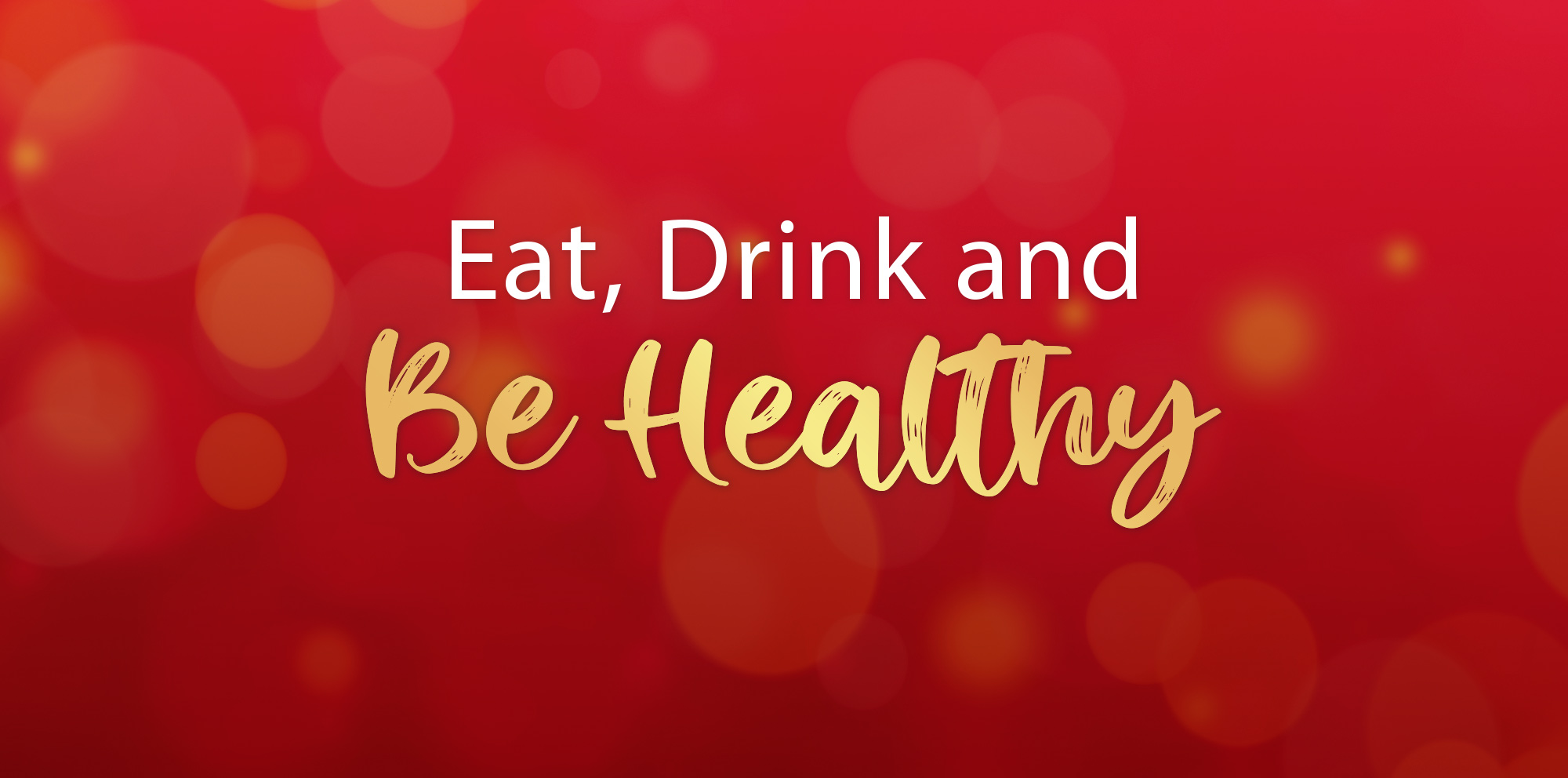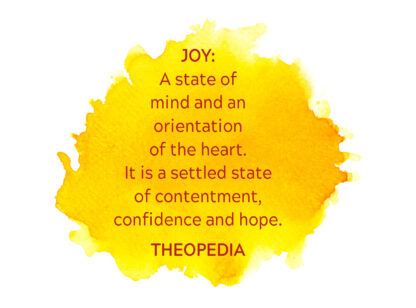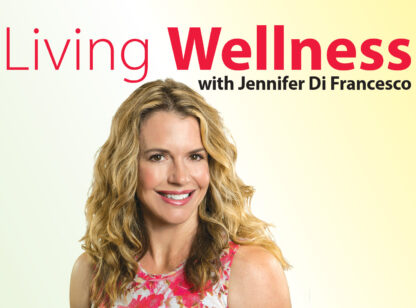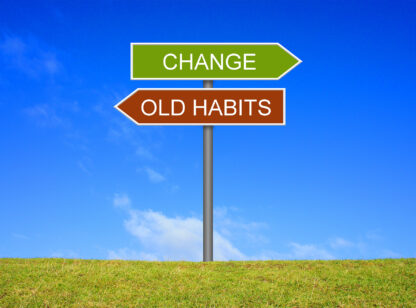Earlier this year, we introduced our “Eat, Drink and Be Healthy” column to offer savory substitutes to your favorite foods. We’ve featured salty snacks to replace chips, hearty veggie pastas, sugar-free ice cream sundaes — even sugar-free margaritas.
But what if you’re simply not motivated to choose the healthier option? How do you find that motivation? To answer these questions, we turned to local practitioners and the latest research.
Being healthy shouldn’t mean depriving yourself. In fact, it’s just the opposite. When you incorporate healthier choices into your life and they become your new routine, you start to feel great about those choices because they physically and mentally make you feel great. Whether it’s healthier foods to satisfy those cravings or exercise that gets your heart racing, in a short time, those things will become your new favorites, and the results will show.
If you’re tired of not waking up with a smile on your face (yes, it’s possible!), read on. Each of these steps can help bring you closer to making healthier choices your new way of life.
Dig deep to find motivation that matters
We are all driven by things that make us feel good, but the depth of those feelings can be the difference between short and long-term success. While losing weight to look better in a bathing suit may sound like a strong incentive, enhancing your heart health so you can play with your grandkids will be more effective.
Identifying what drives you to make any decisions in your life takes time and self-discovery, and it’s a great place to start.
“Along with discussing history, part of my initial intake is to ask patients what matters to them the most and what are some of their daily concerns,” says integrative doctor Jeralyn Brossfield, MD of XO Health, who is also a diplomate of the American Board of Obesity Medicine. “When we dig into meaning, my health coaches and I have learned that it is usually the third to seventh answer, not the first, that is a person’s true motivator.”
Health coaches standardly use a myriad of questions to discover true motivators. “The first round of answers we receive are often a bit superficial,” she adds. “So, my most powerful question can be ‘And what else?’”

Determining why you lack motivation is just as important, adds Functional Medicine Certified Health Coach Kirsten Foster. “Understanding your historical patterns and then flipping the script is one of the goals of self-discovery. Why did I go to the coffee shop and get that sugary drink when I know it’s not good for me? Many habits are simply routine, but when and why did they start, and what can we replace them with to still satisfy?”
The deep dive is even necessary when people are faced with health issues, says Foster. “When people receive a diagnosis of, say, diabetes, cancer or cognitive decline, the fear is very motivating at first, but we quickly need to convert that into self-discovery for life long change.”
Set aside time and make a list of questions that will help you identify your true motivators; the more personal they are, the better they will be at guiding you down your new path.
Set goals, and then set more goals
“Having a new goal set before you finish the first one is an effective means of maintaining motivation,” says Brossfield. “If you set your goal on running a 5K and get into the routine of training for that race, once the race is over, it’s easy to fall back into old behaviors. But if you’ve already set a new goal on the horizon, it can help keep you on track and keep you moving forward in a positive direction.”
Be sure to keep your goals SMART, adds Foster, Specific, Measurable, Achievable, Relevant and Time-bound. Determine your action steps to get you there, and then it helps to track your progress. When you achieve your goals, it’s time to reward yourself with a healthy activity or gift.
Keep it fun
If your goals and action steps are things you enjoy, you’re more likely to stick with them. Be honest with yourself about what you like and don’t like. Are you more of a group person, or do you like individual exercise? Would you rather lace-up walking shoes or pedal a bike with the wind in your hair?
“It’s important to step away from the judgment of how someone else thinks it should be done,” says Brossfield. “This allows us to be more explorative in finding healthy habits we will stick to.”
“The old way of telling people what to do doesn’t work for long-term change,” says Foster, adding that positive psychology is much more effective. “Spotting inherent strengths that clients often don’t see in themselves, but can feel good about, is key in creating individualized action plans. We reflect them back and ask how that person feels about utilizing those strengths towards successful change.” For example, when considering the best form of sustainable movement for a client, if they express a love of nature as one of their character strengths, they may recommend gardening or hiking versus going to a gym.
Roll it into your routine
If there is a new action you want to start, place it seamlessly into your existing routine, says Brossfield. “If you want to start walking in the morning, lay out your clothes the night before, so they are in your path when you wake in the next morning.” Or, if Starbucks is your happy stop on the way to work, order a black coffee with coconut or almond milk; if chips in the pantry call to you each day after work, replace them with mixed nuts and olives, or pre-cut fresh fruit in the refrigerator to look forward to as a refreshing new snack.
Practice positive self-talk

We’ve all seen tough coaches yelling at clients on TV in an attempt to motivate them forward. It turns out that tactic doesn’t work as well as positive messaging, so be kind to yourself.
Modern research shows us that most are motivated by positive health messaging more so than negative or fear-based messages. ‘Eating these greens will give me more energy and healthier skin’ is more effective than, ‘If I don’t eat these greens, I’ll be more susceptible to cancer.’
“What you resist persists,” says Brossfield. “If you focus on the negative, you are giving that more energy and more power; it’s the natural law of attraction.”
Encourage yourself along the way; recognize losses, but don’t spend too much time beating yourself up. If you do, you are more likely to stay off track. Revisit your goals, get back on track, continue with encouragement and be sure to reward the wins.
Practice mindfulness
Mindful people are more likely to adopt healthier behaviors than those who do not practice mindfulness, according to a 2016 Cornell study published in the journal Mindfulness. The study concluded that some people felt bad about themselves, when confronted with health messages, which didn’t help them change their behavior. Those who practiced mindfulness reacted less negatively, were less likely to feel ashamed and were more likely to change health behaviors.
“Many patients tell me that they just can’t meditate,” says Brossfield, “but meditation is not the only way to be mindful; anything that tunes you into the ‘moment of now’ is mindfulness. It doesn’t have to be according to someone else’s script.”
She explains that when looking to make healthier choices, our “automatics” are the things we are most trying to change: eating a pint of ice cream because we’re angry, drinking wine at the end of the day because we’re exhausted.
“Mindfulness gives us the power to pause and look at the emotion or feeling, almost labeling the thing that is happening, and then allows us to choose a different way of dealing with it instead of defaulting to the automatic response,” she states. “Anything that increases the pause between stimuli and your reaction is very beneficial.”
So, dig deep, set goals, keep it fun, make it routine, practice positive and be mindful along the way. Before you know it, you’ll be excited about new ways to “Eat, Drink & Be Healthy!”
Editorial by Publisher Lauren Del Sarto. Jeralyn Brossfield, MD and Kirsten Foster, FMCHC are with XO Health in Rancho Mirage and can be reached at (760) 573.2761.
Sources: 1) www.academic.oup.com/nutritionreviews/article/73/1/4/1806771; 2) https://pubmed.ncbi.nlm.nih.gov/28344683/

















































Comments (0)